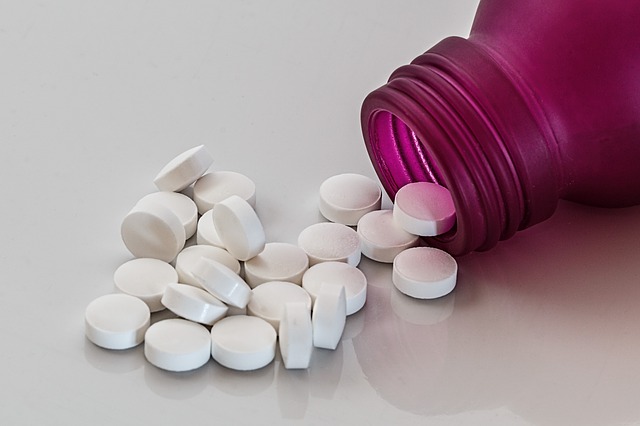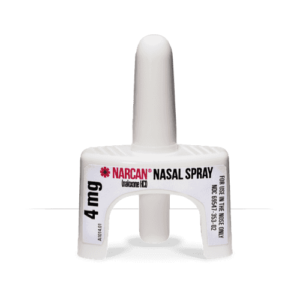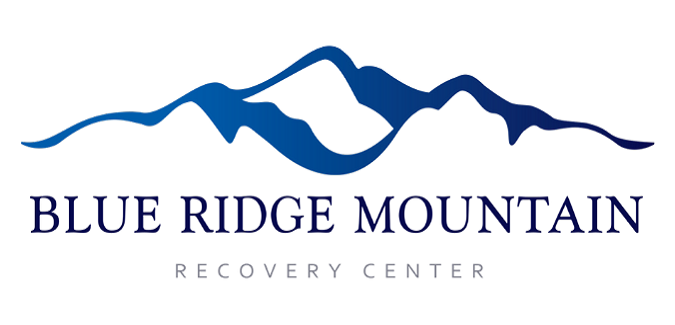
Contributor: Staff at Blue Ridge Mountain Recovery Center
The opioid epidemic has plagued communities across the nation for more than 20 years, with opioid overdose deaths in the United States reaching nearly 600,000 since 1999 [1].
The ongoing COVID-19 pandemic has put a strain on the public healthcare system while drug overdose deaths are at an all-time high, and policy reform is now required to combat the opioid crisis effectively.
As experts warn that an additional 1.2 million opioid overdose deaths are expected in the U.S. by 2029, the United States government has begun to prioritize harm reduction services for the first time ever [2]. The Biden administration is also working to increase access to resources for opioid addiction prevention, fight illicit drug trafficking, and make treatment more accessible in an effort to save lives.
The Start of the Opioid Epidemic Crisis
The 1990s marked the beginning of the current opioid epidemic, which is one of the worst public health emergencies to ever hit the United States.
Throughout the decade, the pharmaceutical industry led massive marketing campaigns encouraging the use of opioids as an all-purpose pain medication. These campaigns pushed physicians throughout the country to overprescribe drugs like oxycodone, hydrocodone, and morphine at an alarming rate.
Call Blue Ridge Mountain Recovery Center for Help 855-409-5590
Prescription opioids that were initially intended for short-term use to treat moderate and chronic pain in cancer patients — or following an injury or surgery — have since been prescribed to treat acute pain despite a lack of evidence of their effectiveness and safety [1].
According to the National Institute on Drug Abuse (NIDA), opioid-related overdose deaths rose from about 21,000 in 2010 to almost 48,000 in 2017 [3].
Over time, increased access to prescription opioids and illicit drugs like fentanyl and heroin made the opioid crisis even worse as the rates of opioid addiction and opioid-related overdose deaths continued to grow. In 2019, 14,000 people in the U.S. died from a drug overdose involving the semisynthetic drug heroin [4]. In that same year, more than 36,000 people died from a synthetic opioid overdose involving synthetic opioids such as fentanyl [5].
The lack of a reformed public health approach to treating addiction as a chronic disease is yet another reason for the crisis. Combined with other socioeconomic factors, these reasons have led to the widespread misuse of opioids.
The Opioid Epidemic During COVID-19
More than 76,000 people lost their lives to opioids in 2020, making it the deadliest year for fatal opioid overdoses in America [1].
Between 2019 and 2020, opioid overdose deaths in the United States increased by roughly 37% [2]. While a rise in overdose deaths was anticipated prior to the onset of the COVID-19 pandemic, this data still suggests that the coronavirus may have played a role in this spike in opioid overdoses.
 Risk factors for substance use disorders, like feelings of despair and isolation due to social distancing measures, school- and work-related stress, and reduced access to in-person support networks, have further impacted the opioid crisis in America.
Risk factors for substance use disorders, like feelings of despair and isolation due to social distancing measures, school- and work-related stress, and reduced access to in-person support networks, have further impacted the opioid crisis in America.
With limited access to substance use prevention and treatment services, it is difficult for those who are at risk of developing an opioid addiction to get the help they need.
As the global pandemic continues, the government is working to allow physicians to treat patients with methadone and buprenorphine through telehealth options. The Substance Abuse and Mental Health Services Administration (SAMHSA) is also considering expanding take-home medication flexibilities to promote personalized, recovery-oriented care for those who lack reliable transportation to and from opioid treatment programs [2].
Further Addressing the Opioid Epidemic Crisis
The Centers for Disease Control and Prevention (CDC) estimates that more than 104,000 Americans passed away due to a drug overdose between September 2020 and September 2021, with about 79,000 dying from an opioid overdose [2].
As the opioid epidemic continues to have devastating consequences, there are plans underway to advance research and minimize drug violence. The Biden administration is requesting a $41 billion investment for drug policy efforts to end the opioid epidemic by expanding prevention, harm reduction, treatment, recovery, and supply reduction approaches to address addiction and drug overdoses.
Professor Keith Humphreys of Stanford University suggests investing in education and community support services to stop the cycle of addiction before it begins, as research indicates that adolescents are often exposed to opioids in their own homes [1]. Such programs can inform children and their parents of the dangers associated with misusing prescription opioids.
But it may take several years for progress to be made, even if actions like this are taken to combat the crisis.
In a historic move, the government plans to fund harm reduction services such as fentanyl test strips, opioid overdose reversal medications like naloxone, and syringe service programs. Harm reduction interventions like these have proven to be effective in saving lives and motivating individuals to reduce their drug use and seek treatment for an addiction [2].
 Establishing a set of recommendations for addiction and overdose treatment within hospitals is another vital step in better coordinating care for those who are struggling with opioid addictions. In addition, the administration will work to expand medication-assisted treatment (MAT) in incarcerated settings, as inmates who are newly released are at an especially high risk for overdose [2].
Establishing a set of recommendations for addiction and overdose treatment within hospitals is another vital step in better coordinating care for those who are struggling with opioid addictions. In addition, the administration will work to expand medication-assisted treatment (MAT) in incarcerated settings, as inmates who are newly released are at an especially high risk for overdose [2].
The administration is also working to stop the trafficking of illicit drugs by expanding the government’s ability to target drug trafficking organizations and the people who are funding them. Through the government’s High-Intensity Drug Trafficking Areas (HIDTA) program, new areas will be designated to disrupt drug traffickers in the air, on land, and at sea [2].
As America works to put an end to the opioid epidemic amid the global pandemic, it is important to understand that addictions like opioid use disorder are treatable. With increased access to opioid addiction treatment services through the government’s latest approach to ending the crisis, individuals who are suffering from opioid addictions can take the first step toward a better life.
References
[1] The Lancet. (2022, February 2). Over 1.2 million additional opioid overdose deaths expected in North America by 2029, with epidemic set to expand globally, experts warn. EurekAlert! Retrieved from https://www.eurekalert.org/news-releases/941988.
[2] The United States Government. (2022, March 2). Fact sheet: Addressing addiction and the overdose epidemic. The White House. Retrieved from https://www.whitehouse.gov/briefing-room/statements-releases/2022/03/01/fact-sheet-addressing-addiction-and-the-overdose-epidemic/.
[3] U.S. Department of Health and Human Services. (2022, May 16). Overdose death rates. National Institutes of Health. Retrieved from https://nida.nih.gov/drug-topics/trends-statistics/overdose-death-rates.
[4] Centers for Disease Control and Prevention. (2021, March 25). Heroin overdose data. Centers for Disease Control and Prevention. Retrieved from https://www.cdc.gov/drugoverdose/deaths/heroin/index.html.
[5] Centers for Disease Control and Prevention. (2021, February 16). Fentanyl. Centers for Disease Control and Prevention. Retrieved from https://www.cdc.gov/opioids/basics/fentanyl.html.
About Our Sponsor:
 Blue Ridge Mountain Recovery Center is a premier provider of residential addiction treatment and detoxification services for adults. Located in Ball Ground, Georgia, just an hour north of Atlanta, the facility is set on 40 acres of wooded countryside in the Blue Ridge Mountains, providing a serene and peaceful backdrop to help clients who are struggling with substance use disorders and co-occurring mental health concerns. Blue Ridge Mountain Recovery Center offers specialty services, such as a family program, a relapse recovery program, and a treatment track designed for veterans. To learn more, visit www.blueridgemountainrecovery.com.
Blue Ridge Mountain Recovery Center is a premier provider of residential addiction treatment and detoxification services for adults. Located in Ball Ground, Georgia, just an hour north of Atlanta, the facility is set on 40 acres of wooded countryside in the Blue Ridge Mountains, providing a serene and peaceful backdrop to help clients who are struggling with substance use disorders and co-occurring mental health concerns. Blue Ridge Mountain Recovery Center offers specialty services, such as a family program, a relapse recovery program, and a treatment track designed for veterans. To learn more, visit www.blueridgemountainrecovery.com.
The opinions and views of our guest contributors are shared to provide a broad perspective of addictions. These are not necessarily the views of Addiction Hope, but an effort to offer a discussion of various issues by different concerned individuals.
We at Addiction Hope understand that addictions result from multiple physical, emotional, environmental, and genetic factors. If you or a loved one are suffering from an addiction, please know that there is hope for you, and seek immediate professional help.
Published on May 26, 2022
Reviewed by Jacquelyn Ekern, MS, LPC on May 26, 2022
Published on AddictionHope.com
